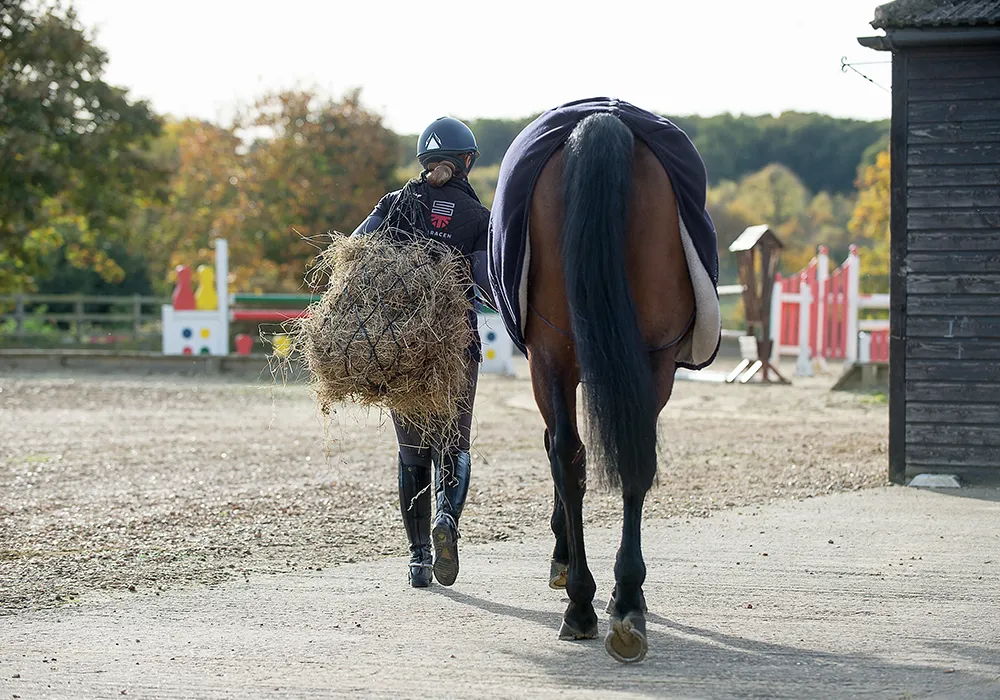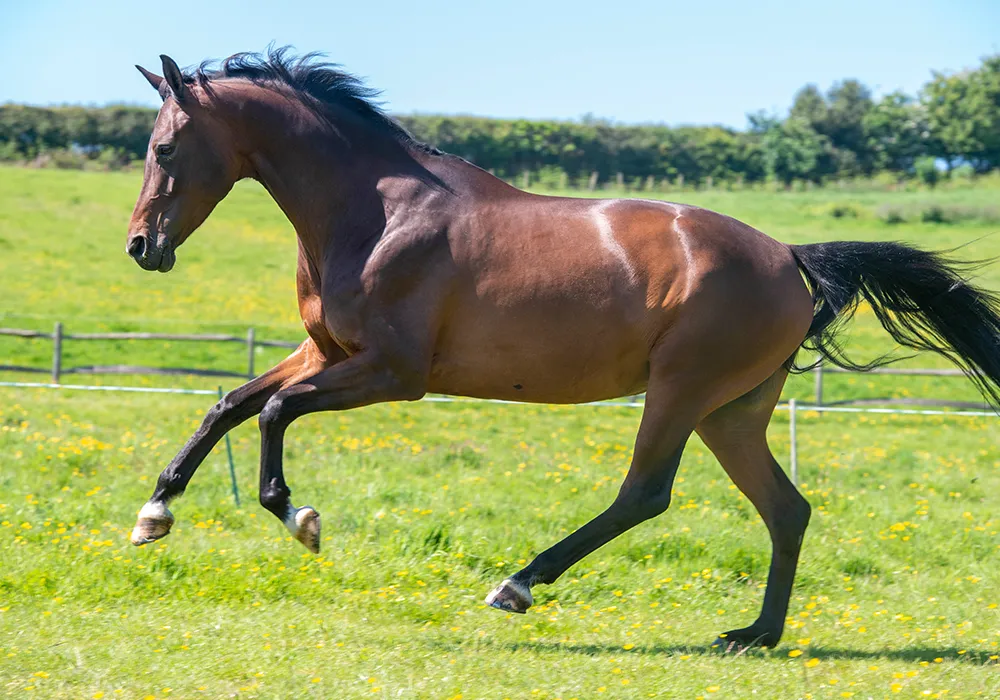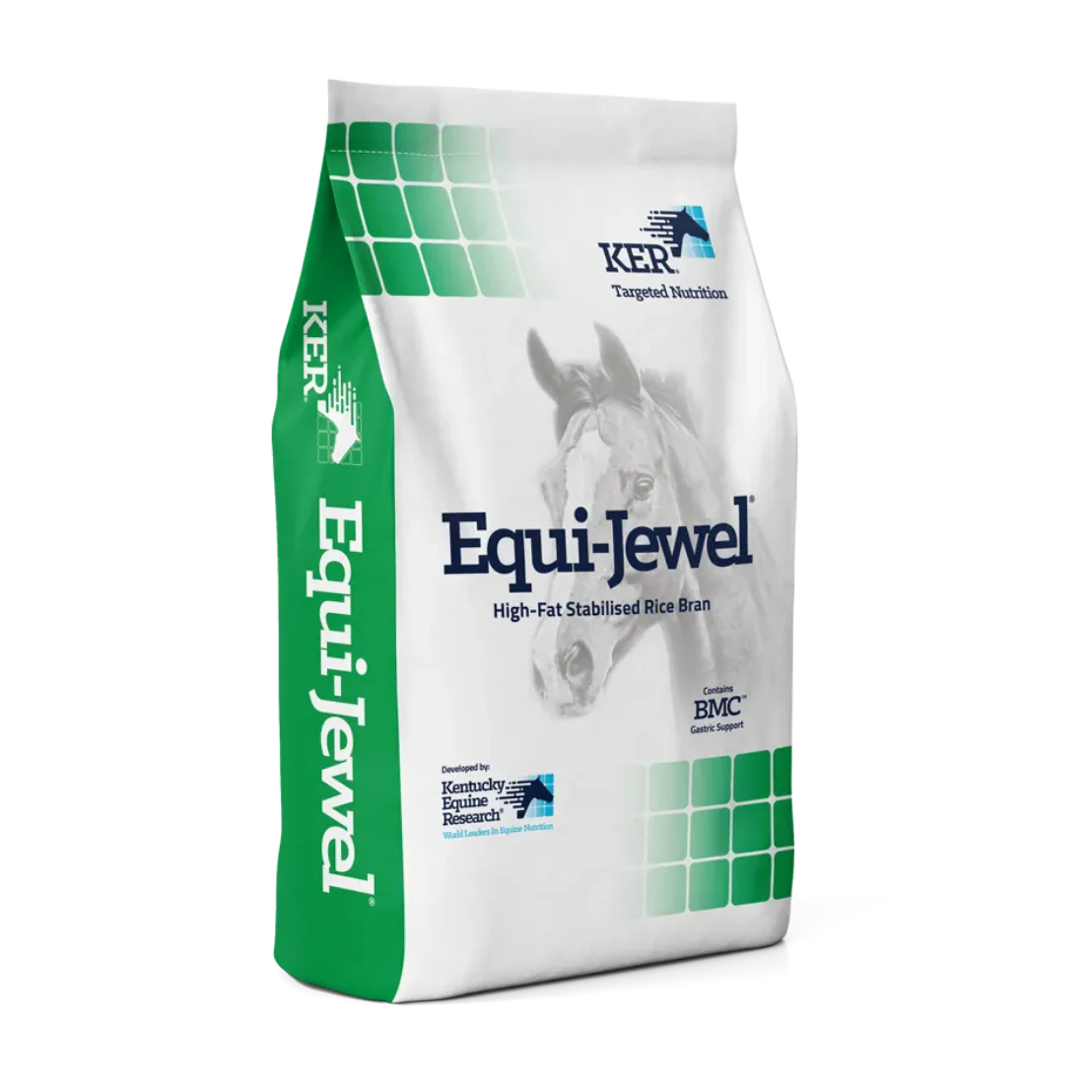Forage Analysis for Horses Explained

The world of feeding can feel like a bit of a jigsaw puzzle, especially if you’re not exactly sure what you’re working with. After all, how can you feed your horse a balanced diet if you don’t know what it is you’re trying to balance? That’s where a forage analysis comes in.
Despite how important it is, only a small number of owners routinely test their horse’s hay, haylage or grass. Yet a proper forage test is the only way to know the true nutritional quality of forage. Armed with those results, an equine nutritionist can make the right calls when putting together your horse’s ration.
Curious to know what’s really in your horse’s forage? Let’s dig in.
Why do a forage analysis?
Even when you’ve got what looks like good-quality forage – soft spring grass or a nice low-maturity cut of hay – it still won’t provide every essential vitamin and mineral your horse needs to stay healthy. That’s why a proper forage test is worth its salt.
For good-doers and those prone to metabolic issues, checking the sugar content in hay and haylage is vital, too. If levels come back high, steps like soaking your hay can make all the difference. On the flip side, if you’ve got a poor-doer who just won’t hold weight, a forage analysis can flag up whether their ration is lacking in calories, helping you decide if they need more feed or forage replacements.
And don’t forget the harder-working types like performance horses and breeding stock. Their nutrient demands are higher than average, and only by testing the nutritional quality of their forage can you be sure their diet is pulling its weight.
When to do a forage analysis
There are plenty of times it makes sense to send off a sample of your hay, haylage or grass for testing. Think of it as routine stable management – it helps you spot problems before they land in your horse’s gut.
You’ll want to consider a forage test if:
- You’re worried about the nutritional or hygienic quality of your horse’s forage
- You’ve changed supplier or moved to a new yard
- You’re planning rations for winter and want to know what nutrients your forage is bringing to the table
- You’ve got a new horse and need a baseline for a proper feeding plan
Tip: Don’t wait until the forage is already in the net. It’s best to send your sample off for forage analysis before feeding and allow time for the lab results to come back.
How to do a forage analysis
Getting a forage test right is all about the sample. A random handful from one bale won’t tell you much – the lab can only analyse what you send. Here’s the step-by-step way to take a representative sample of your hay, haylage or grass so you can trust the results.
Step 1: Choose the right time
Send a sample when a new batch of hay or haylage arrives, before you start feeding it. For grass, seasonal changes in quality are big, so aim for at least one grass analysis for each season.
Step 2: Gather your kit
A hay corer or probe is ideal, but if you don’t have one, clean hands, a dry bucket and a sealable sample bag will do.
Step 3: Collect sub-samples
- For hay analysis, take 10–20 small samples from different bales and different depths.
- For haylage, aim for sub-samples from as many bales as you can open, and from different spots in each bale.
- For grass forage testing, walk the field in a spiral, taking a cut every 10–15 paces at grazing height. Use scissors and make sure you leave soil and roots out of it.
Step 4: Make a composite sample
Mix all the sub-samples in your clean bucket, then take a portion of that mix to go into your sealable sample bag. This way, the lab gets a picture of the whole batch or field, not just one part of it.
Step 5: Send it to the lab
Seal the bag, label it clearly and send it off promptly. The fresher the sample, the more accurate your forage analysis results will be.
Which type of forage analysis should I choose?
Once your sample is ready, it’s time to figure out which forage test suits your horse.
Here’s a quick guide to the three main options:
- NIR Analysis – the go-to for a general overview of forage nutritional quality
- Dietary Minerals Analysis – ideal if you suspect deficiencies or want a detailed mineral breakdown
- WSC Analysis – for horses prone to laminitis or other metabolic issues
Each test has its strengths, so it’s worth knowing what you’ll get from each before sending your sample off.
Near Infrared Reflectance (NIR) Analysis
The most common forage analysis for horses is the NIR test, which gives a clear overview of forage nutritional quality. It measures:
- Dry Matter (DM): Everything in the forage except water – protein, fibre, fat, minerals and more.
- Protein: Naturally varies by species of grass.
- Ash: Reflects total mineral content.
- ADF & NDF: Indicators of fibre and digestibility. NDF over 65% can limit intake, while ADF under 40% is easier to digest.
- Sugar: Total natural sugars in the forage.
- Digestible Energy: The energy value your horse actually receives from the forage.
Order a NIR Analysis Test at our new Shop
Dietary Minerals Analysis
If you’re concerned about deficiencies, the Dietary Minerals test digs deeper.
It measures key minerals such as Phosphorus, Magnesium, Calcium, Sodium, Potassium, Chloride, and includes CAB and micro mineral analysis.
It’s particularly useful if the ash content from an NIR test is low, helping ensure your horse gets all essential nutrients.
Order a Dietary Minerals Analysis Test at our new Shop
Water-Soluble Carbohydrates (WSC) Analysis
For horses at risk of metabolic issues like laminitis, the WSC test checks the sugar levels in forage. It measures water-soluble carbohydrates including fructans and simple sugars like sucrose, glucose, and fructose, so you know whether a batch of hay or grass is suitable.
Order a WSC Analysis Test at our new Shop
What to do with your forage analysis results
Getting your forage test results back is just the start. The numbers tell you how your hay, haylage or grass stacks up against typical nutritional ranges, helping you and your your nutritionist make informed feeding decisions.
Compare Against Typical Ranges
First, see how the values match up with the “typical ranges” for that type of forage. If your horse’s ration is already working and the forage falls within these ranges, there’s usually no need to change anything. After all, most rations are designed assuming average forage quality.
Spotting Outliers
If any values sit outside the usual range, it’s time to take a closer look at how that forage contributes to the whole diet. Forage analysis can reveal why a horse might not be thriving on their current ration or why a poor-doer isn’t gaining as expected.
Adjusting Energy and Nutrients
Remember, if your horse is already on a complete, balanced feed (like a ration balancer or fortified feed), most of his nutrient needs will be met even if the forage isn’t top quality. So you don’t always need to panic if the hay isn’t perfect.
When it comes to energy content, you may need to adjust some things based on the results and the needs of your horse:
- Choose high-energy forage such as hay or grass harvested early or grown under optimal conditions to add more calories. This is good for performance horses, breeding stock or horses that need extra energy.
- Choose lower-energy forage if your horse is a good-doer or overweight. In this case, you might reduce his feed ration, use lower-DE forage or take other steps to prevent weight gain.
So basically: check the digestible energy in the forage, and adjust feeding depending on your horse’s energy requirements.
The key is to use your forage analysis results to fine-tune rations, not just as a curiosity. The goal is a balanced diet that keeps your horse healthy, happy, and performing at their best.
Forage Analysis FAQs
What is a feed analysis and how is it used?
A feed analysis looks at the nutritional content of what your horse is eating – usually concentrates, balancers, or complete feeds. It tells you the levels of protein, fibre, minerals, vitamins, and calories. When combined with a forage analysis, it gives a full picture of your horse’s diet.
What are the techniques of forage analysis?
There are a few ways to test forage for horses, each giving different insights:
- NIR (Near Infrared Reflectance) – gives a general overview of nutrient content, including dry matter, protein, fibre, sugar, and digestible energy.
- Dietary Minerals Analysis – looks specifically at mineral levels like calcium, phosphorus, magnesium, sodium, potassium, and trace minerals.
- WSC (Water-Soluble Carbohydrates) Analysis – measures sugar levels in hay and grass, which is vital for horses prone to laminitis or metabolic issues.
What is the definition of forage for horses?
Forage for horses refers to any fibrous plant material they eat as the bulk of their diet, usually hay, haylage, or grass. It’s the foundation of a horse’s nutrition because it provides fibre for digestion, some protein, minerals, and energy.
Forage alone rarely meets all nutrient needs, which is why combining it with a balanced concentrate or ration balancer – and checking it with a forage analysis – is so important. Think of forage as the base layer of the diet puzzle: get it right, and everything else falls into place.
Further reading
- Choosing the best forage for horses
- Feeding the good-doer
- Feeding the poor-doer
Need Guidance?
If you would like any further information on feeding your horse or pony please feel free to contact our nutritional team on +44 (0)1622 718 487, email info@saracenhorsefeeds.co.uk or fill out our Feed Advice Form.










